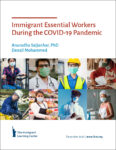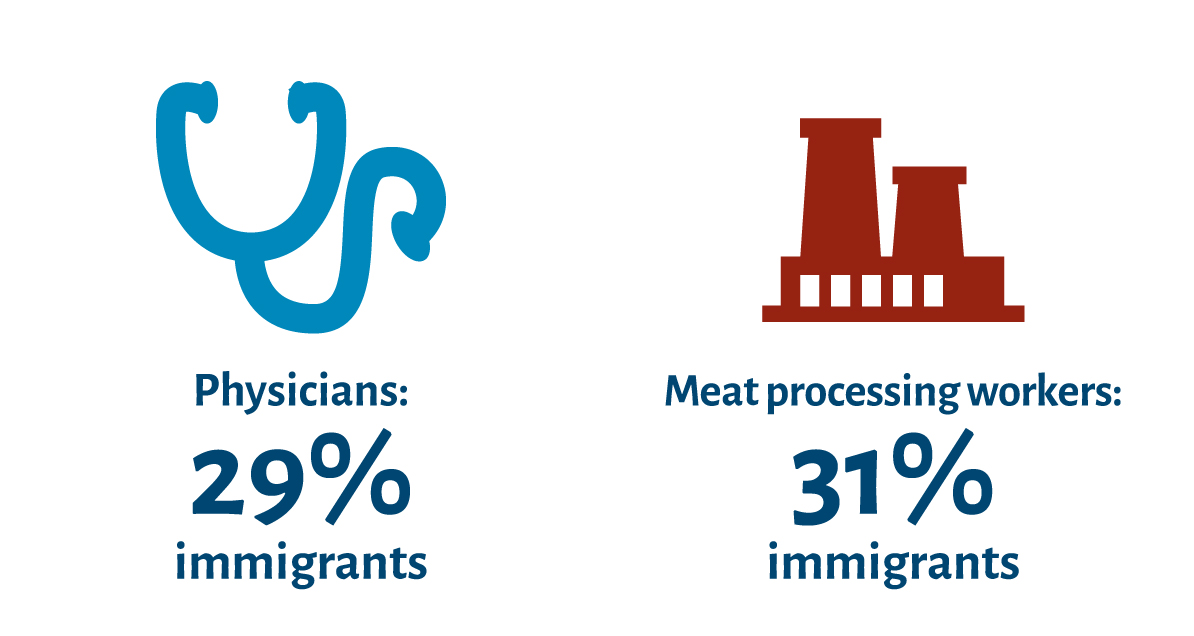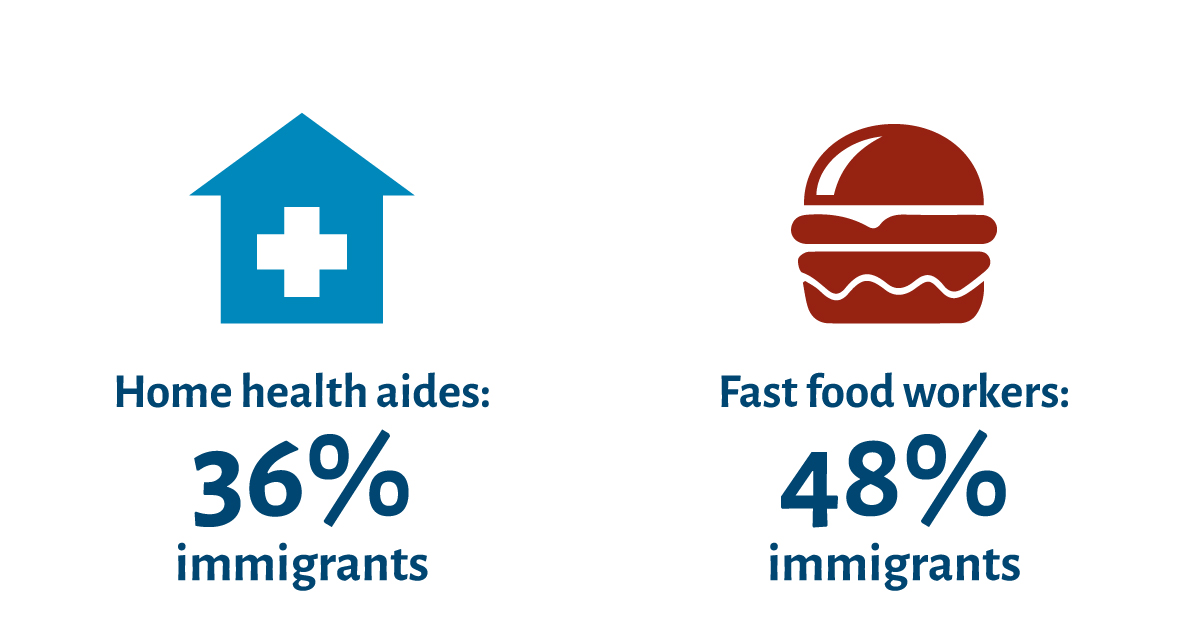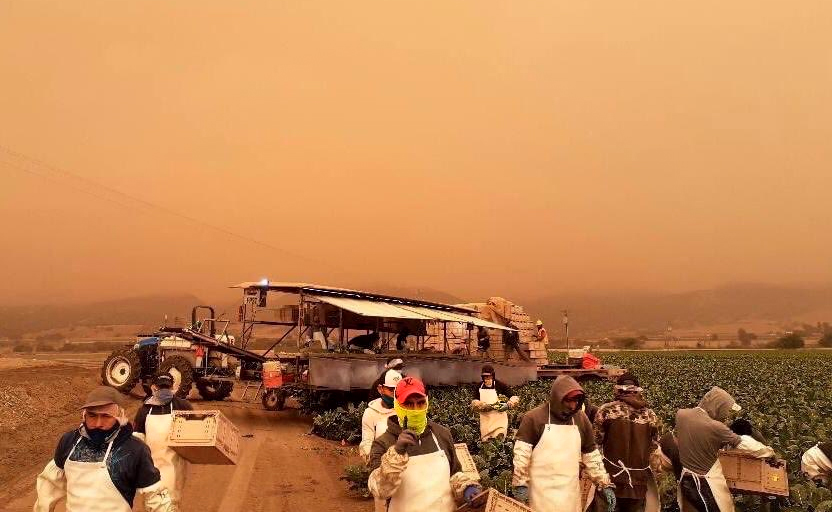
The COVID-19 crisis has highlighted the deep connection between the well-being of U.S.-born and foreign-born Americans. The latest research report from The Immigrant Learning Center’s Public Education Institute, Immigrant Essential Workers During the COVID-19 Pandemic, shows that much of the weight of the pandemic in the United States was born by immigrants who received little to no support from policymakers in return. The report draws on interviews with more than 30 policy experts and immigrant essential workers across the country. The report also features in-depth research on the extraordinary challenges and contributions of immigrant essential workers. We can learn from their experiences to better prepare for the future, rejecting policies that failed frontline workers and building on effective local initiatives.
Contributions of Immigrant Essential Workers
 Immigrant essential workers’ contributions during the COVID-19 crisis have been crucial and oversized. Foreign-born people make up just 14 percent of the U.S. population but 18 percent of the essential workforce. While 65 percent of U.S.-born workers are essential workers, 69 percent of all immigrants in the U.S. labor force and 74 percent of undocumented workers are essential. To name just a few essential occupations, 36 percent of home health aides, 29 percent of physicians, 31 percent of meat processing workers and 48 percent of fast-food workers are immigrants. Despite the often dangerous conditions, our report shows that foreign-born frontline workers have remained committed to supporting their communities through the pandemic. As one interviewee working in health care reflected, “I didn’t think that quitting was an option. I am healthy and it is the right thing to do.” While many people were instructed to “stay home,” essential workers stepped up.
Immigrant essential workers’ contributions during the COVID-19 crisis have been crucial and oversized. Foreign-born people make up just 14 percent of the U.S. population but 18 percent of the essential workforce. While 65 percent of U.S.-born workers are essential workers, 69 percent of all immigrants in the U.S. labor force and 74 percent of undocumented workers are essential. To name just a few essential occupations, 36 percent of home health aides, 29 percent of physicians, 31 percent of meat processing workers and 48 percent of fast-food workers are immigrants. Despite the often dangerous conditions, our report shows that foreign-born frontline workers have remained committed to supporting their communities through the pandemic. As one interviewee working in health care reflected, “I didn’t think that quitting was an option. I am healthy and it is the right thing to do.” While many people were instructed to “stay home,” essential workers stepped up.


Challenges Facing Immigrant Essential Workers

Despite their indispensable role in keeping the economy and society afloat, immigrant essential workers have often faced unnecessary hardships, including lack of access to aid. Many of the resources offered to U.S.-born people were unavailable to immigrants. An estimated 6.2 million essential workers were ineligible for relief payments under the CARES Act, either because they were one of the 5.5 million undocumented immigrant essential workers in the U.S. or in mixed-status families, many of whom had U.S. citizen children. Language and cultural barriers also sometimes put assistance out of reach. In one survey of immigrants in Minnesota, 90 percent of respondents found it difficult to locate information on available aid. Even when aid was provided, it did not always reach the essential workers on the front lines. One immigrant farmworker explained, “I am aware that the agricultural industry has received billions of dollars in COVID-19 legislation, yet no one in our family or in our crew has received masks … Not once has our employer screened us for symptoms.” High rates of COVID-19 infections among immigrant workers kept them out of the essential workforce and increased risks for their entire communities.
Licensing and visa restrictions also prevented immigrants from filling positions in fields where they were badly needed. Burdensome licensing requirements kept many skilled foreign-born health care workers out of jobs that would fully utilize their capabilities. While 1.5 million immigrants are serving as doctors, pharmacists and registered nurses, another 263,000 are out of work or working in positions that do not utilize their health care expertise. Others have visas that allow them to work in health care but forbid them from shifting job locations to combat regional surges in COVID-19. Limited visa options also prevented migrant farmworkers from filling agricultural jobs. These bureaucratic barriers worsened the labor shortages created by widespread COVID-19 infections, contributing to empty grocery store shelves and understaffed intensive care units.
Supporting Immigrant Essential Workers in the Future

While the federal government did little to support immigrant essential workers, state and local governments and even individuals launched successful initiatives that could be expanded to counter the next public health crisis. Community organizations and churches have been vital frontline public health messengers throughout the crisis. Reaching immigrant essential workers with accurate health information and creating workplace protections is necessary to prevent outbreaks like the ones that devastated meatpacking facilities. Sofia, an advocate for migrant farmworkers, reported that mobilization efforts also pushed city councils and local governments to create benefits, including health care resources, for immigrant essential workers. When the federal government didn’t provide aid to non-citizens in the CARES Act, some states and city councils allocated direct aid payments to the excluded groups. A number of states reworked licensing requirements or created programs to more quickly allow foreign-trained health care workers into the essential workforce. These effective interventions provide a roadmap for ensuring that immigrant essential workers are adequately supported in the future. Protections for immigrant essential workers would benefit communities as well as workers by strengthening immigrants’ ability to continue working and lightening the strain on our health care systems.
All Americans rely on immigrant essential workers. When they harvest produce during wildfires, staff hospitals through waves of COVID-19 and much more, we all benefit. When they were forced to leave their essential occupations due to unsafe conditions and kept from fulfilling their potential by outdated bureaucracy, we all felt the ill-effects. As the United States struggles to get clear of this crisis and prepare for the next one, valuing and protecting immigrant essential workers is a matter of national urgency. Please read and share The ILC’s research report to learn more about this important issue.
